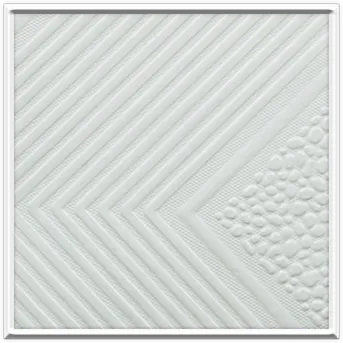- Afrikaans
- Albanian
- Amharic
- Arabic
- Armenian
- Azerbaijani
- Basque
- Belarusian
- Bengali
- Bosnian
- Bulgarian
- Catalan
- Cebuano
- Corsican
- Croatian
- Czech
- Danish
- Dutch
- English
- Esperanto
- Estonian
- French
- German
- Greek
- Hindi
- Indonesian
- irish
- Italian
- Japanese
- Korean
- Lao
- Malay
- Myanmar
- Norwegian
- Norwegian
- Polish
- Portuguese
- Romanian
- Russian
- Serbian
- Spanish
- Swedish
- Thai
- Turkish
- Ukrainian
- Uzbek
- Vietnamese
нов . 27, 2024 07:50 Back to list
One Hour Fire Rated Ceiling Access Panel for Enhanced Safety and Accessibility
Understanding 1-Hour Fire Rated Ceiling Access Panels
In modern building design and construction, safety is paramount, particularly when it comes to fire protection. One essential component that supports fire safety measures is the 1-hour fire rated ceiling access panel. These panels are not just practical; they play a critical role in maintaining building integrity while providing necessary access to concealed spaces such as maintenance chases, ductwork, and plumbing systems.
What is a 1-Hour Fire Rated Ceiling Access Panel?
A 1-hour fire rated ceiling access panel is designed to prevent the spread of fire and smoke between adjacent areas for at least one hour, conforming to stringent building codes and safety standards. These panels are often made from non-combustible materials, and they include features like fire-resistant insulation to help combat flame spread. The rating indicates the duration that the panel can withstand exposure to fire without failing, making it suitable for various applications, including commercial buildings, residential complexes, and industrial facilities.
Importance of Fire Rated Access Panels
Fire rated access panels serve multiple purposes in building safety and functionality. First and foremost, they provide access to critical infrastructure, allowing maintenance personnel to service HVAC systems, electrical wiring, and plumbing without compromising fire safety. In commercial settings, where code compliance is closely monitored, the inclusion of fire rated access panels helps to meet legal requirements and avoid costly fines.
Moreover, these panels contribute to the overall fire resistance of a building. In the event of a fire, the access panel acts as a barrier, slowing down or preventing the fire's spread to other areas. This crucial time can enable occupants to evacuate safely and provide firefighters with the necessary time to manage the fire effectively.
Installation Considerations
When installing a 1-hour fire rated ceiling access panel, it is essential to adhere to local building codes and fire safety regulations. The installation process should be performed by qualified professionals who understand the importance of properly sealing the panel edges with fire-rated materials. Incorrect installations can compromise the panel's fire rating, rendering it ineffective in a fire situation.
1 hour fire rated ceiling access panel

Additionally, it is vital to choose the right size and location for the access panel. Consideration should be given to factors such as accessibility for maintenance, the type of systems being concealed, and the potential need for future expansions.
Types of Applications
1-hour fire rated ceiling access panels are versatile and can be found in various settings. In commercial buildings, they are commonly installed in areas where fire barriers are required, such as between different occupancy types or in large open floor plans. In residential buildings, they are often used in basements or attics to provide access to electronic systems or mechanical equipment.
Moreover, these panels can be used in healthcare facilities, schools, and other environments where fire safety is critical. In these spaces, maintaining a fire barrier is essential not only for occupant safety but also for protecting sensitive equipment and data.
Maintenance and Inspection
Just like any other building component, 1-hour fire rated ceiling access panels require regular inspection and maintenance. This ensures that the panels remain intact and functional. Inspections should focus on checking for any signs of damage, wear, or improper sealing. Any detected issues should be addressed immediately to maintain fire safety standards.
Conclusion
In conclusion, 1-hour fire rated ceiling access panels play an indispensable role in the safety and functionality of modern buildings. Their ability to provide access while preventing the spread of fire and smoke underscores their importance in building design. As fire safety regulations continue to evolve, integrating these panels into construction projects will remain a best practice for ensuring the safety of occupants and the integrity of the structure. Building owners and maintenance teams must prioritize proper installation, routine inspections, and maintenance to ensure these critical components perform as intended when it matters the most. Fire rated access panels are not just a regulatory requirement; they are essential tools in the ongoing effort to promote fire safety in our built environment.
-
Transform Interiors with PVC Gypsum Ceiling: A Stylish, Durable, and Moisture-Resistant SolutionNewsMay.19,2025
-
The Smart Interior Upgrade: Discover the Durability and Versatility of Gypsum Ceiling Access Panel SolutionsNewsMay.19,2025
-
The Smart Choice for Interior Design: Discover the Value of PVC Gypsum Ceiling SolutionsNewsMay.19,2025
-
Mineral Fiber Ceiling Tiles: The Smart Blend of Performance and AestheticsNewsMay.19,2025
-
Mineral Fiber Ceiling Tiles: The Superior Choice Over Gypsum for Sound and Fire SafetyNewsMay.19,2025
-
Mineral Fiber Ceiling Tiles: Eco-Friendly Strength and Style for Every CeilingNewsMay.19,2025







